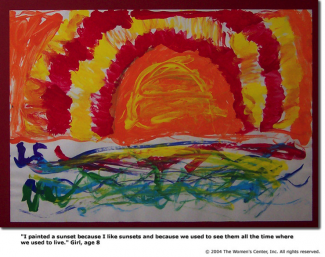by Casey Keene, Director of Prevention for the National Resource Center on Domestic Violence, a product of the ACE-DV Leadership Forum
Many of us understand psychological resilience as the human ability to “bounce back” after facing adversity, and we are surprised – astonished, even – at the ways in which people can survive, and often thrive, despite their experiences of trauma.
But here is what we know: resilience is an innate human capacity that can be learned and developed in anyone. It’s not a trait – something that people have or don’t have – rather, all people have the ability to develop the skills that will put them on the path to resilience.
According to Michael Unger of the Resilience Research Centre, resilience is the human capacity to navigate and negotiate culturally meaningful resources to sustain their well being. It has to do with a person’s ability to make plans and follow through with them, to problem solve, and to manage impulses and feelings. Resilience is more than a skill – it’s an adaptation.
Ordinary Magic
We also know that trauma is a common human experience. For example, the National Survey of Children’s Exposure to Violence (2009) revealed that “most of our society’s children are exposed to violence in their daily lives.” But, as noted in the article Bolstering Resilience: Benefiting from Lessons Learned from the Melissa Institute (2008), 1/2 to 2/3 of children exposed to trauma go on to “overcome the odds” and achieve successful and well adjusted lives.
In American Psychologist, researcher Ann Masten of the University of Minnesota states that “the great surprise of resilience research is the ordinariness of the phenomena” (2001). While human adaptation is truly remarkable, we should in fact not be surprised when this basic human operation works.
Post-Traumatic Growth
In his keynote at the 3rd International Pathways to Resilience conference in June, Bruce Ellis of the University of Arizona explains the concept of post-traumatic growth, which offers a counterbalance to the incomplete deficit model for understanding the human experience after trauma. He notes that we need to “see through the darkness to leverage what it gives us” (2015), explaining how ACEs (adverse childhood experiences) develop specialized skills for adaptation. If we are able to recognize and celebrate the positive changes that can occur after trauma, we can best promote the factors that bolster resilience capacity.
Building Capacity for Resilience
Boiled down, there are three key factors promoting psychological resilience:
- Internal support: Abilities and skills such as communication, problem-solving, behavioral and emotional regulation, hope, and a positive view of oneself.
- External support: Caring supportive relationships with friends, family, neighbors, etc.
- Existential support: Cultural values and faith/belief systems.
Culture cuts across all factors promoting resilience and affects the way we form networks, what skills and abilities are valued, and determines our core values and beliefs. In this way, a person’s culture may impact their trauma response and tap different resiliencies.
There are three key types of strategies for building capacity for resilience:
- Risk-focused, which aim to prevent/reduce adversity exposure.
- Asset-focused, looking towards increasing resources or access to resources.
- Process-focused, harnessing the power of adaptive systems/networks.
Across the board, the most important factor in developing resilience is having caring and supportive relationships within and outside of the family. Relationships that create love and trust, provide role models, and offer encouragement and reassurance help bolster a person’s resilience.
And perhaps one of the most important things that helpers/advocates can do is to build our own capacity for resilience. There is power in modeling this important process to foster these adaptive skills in the survivors we serve.
Walking the Path
“The healing process isn’t about becoming who you might have been had you not experienced trauma. It’s about integrating the wisdom you have gained from this experience into your life” (Psychology Today, 2015).
Resilience is a process in that there is no end. There is no point at which a person can declare, “I’m done! I’ve achieved resilience!” and check it off their list. Our lives are ever evolving narratives, and so is the pathway to resilience, and the equally important parallel process of healing.
The challenge of understanding resilience as an outcome is in its very definition: Who defines whether or not a person has achieved it? What is the standard? (Is it the ability to function in society? The absence of psychopathology? Who decides?) And if a person struggles down the road, must they relinquish that title? It’s important to understand that resilience does not mean the absence of negative outcomes – it simply refers to the ability to navigate, cope, and thrive despite them.
Survivors (and helpers/advocates) walking the path to resilience can engage in core activities along the way to strengthen their capacity:
- Identify or name your experience
- Tell your story
- Practice mindfulness
- Ground yourself in your body
- Seek support
According to Psychology Today, “We have the capacity, within ourselves, to create better health” (Psychology Today, 2015). It’s the most important super power you didn’t realize you’ve always had.
What strategies have you used to help build survivors’ capacity for resilience?















